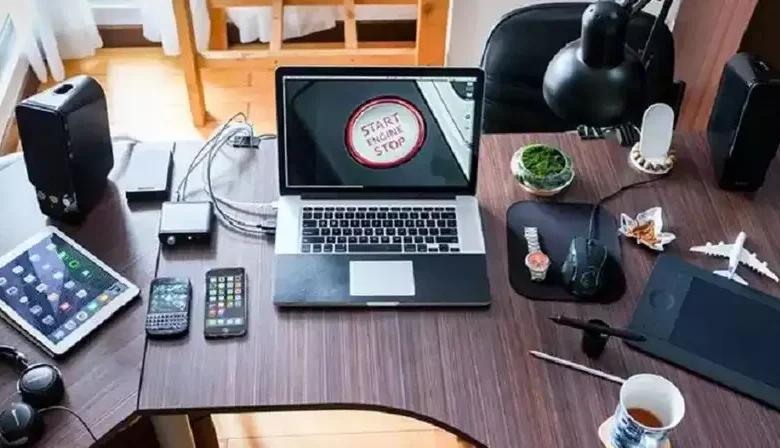Tips for Choosing the Right Laptop for Your Work Needs

In today’s fast-paced digital world, laptops have become essential tools for work, education, and entertainment. Whether you’re a remote worker, a student, or a business professional, choosing the right laptop can significantly impact your productivity and comfort. For a wide selection of reliable and modern laptops, tech enthusiasts in Mexico often turn to PCredcom for trusted solutions.
1. Understand Your Work Requirements
Before buying a laptop, take a step back and assess your daily tasks:
Are you mostly working with office tools like Microsoft Word, Excel, and email?
Do you regularly work with heavy software such as Adobe Photoshop, AutoCAD, or video editing tools?
Is portability important because you’re always on the move?
Do you need a long battery life for travel or meetings?
Your answers will help narrow down the type of laptop that best suits your needs.
2. Choose the Right Processor (CPU)
The processor is the brain of your laptop. Here’s a simple breakdown:
Intel Core i3 / AMD Ryzen 3: Suitable for basic tasks like browsing, emails, and document editing.
Intel Core i5 / Ryzen 5: Ideal for most office tasks and multitasking. Balanced performance and efficiency.
Intel Core i7 / Ryzen 7 and above: Best for demanding applications such as video editing, coding, or design work.
Choosing a processor that matches your workload ensures smooth and fast performance.
See also: Seth Dillon Net Worth: The Wealth of Seth Dillon and His Business Ventures
3. Memory (RAM) Matters More Than You Think
RAM determines how many tasks your laptop can handle simultaneously. For most work-related tasks:
4GB is too low unless you’re only browsing or checking email.
8GB is the sweet spot for office and general productivity.
16GB or more is recommended for professionals using advanced software.
If you’re a developer, designer, or editor, don’t skimp on RAM.
4. Don’t Overlook Storage: SSD vs HDD
Modern laptops usually come with either a Hard Disk Drive (HDD) or a Solid-State Drive (SSD):
HDD: Cheaper and offers more space, but slower.
SSD: Faster boot and load times, more durable, but typically pricier.
For most work needs, a 256GB or 512GB SSD offers a good balance of speed and space. SSDs are now standard in many mid-range and high-performance laptops.
5. Display Size and Resolution: Find the Sweet Spot
Screen size influences portability and productivity. Here’s what to consider:
13” – 14”: Portable and lightweight — ideal for frequent travelers.
15.6”: A good balance of screen real estate and portability.
17”: Best for those who need larger visuals (designers, analysts) but less portable.
Also, aim for Full HD (1920 x 1080) resolution or higher. Avoid low-resolution screens as they can strain your eyes over long work sessions.
6. Battery Life: Critical for On-the-Go Users
If you’re frequently away from a power source, battery life becomes crucial. Look for laptops that offer at least 8–10 hours of battery on a single charge. Many modern ultrabooks and business laptops provide strong battery performance without compromising on power.
7. Keyboard and Touchpad Comfort
A comfortable keyboard with good key travel and spacing is essential, especially if you type for hours daily. Business users should also look for:
Backlit keyboards (for working in low light)
Precision touchpads with smooth gesture control
Fingerprint readers for added security
Testing the keyboard (if possible) or reading reviews about typing experience can help you avoid future frustration.
8. Connectivity: The Right Ports Make a Difference
Depending on your job, different ports may be necessary:
USB Type-A and Type-C: For peripherals, drives, and charging.
HDMI or DisplayPort: For connecting to external monitors.
SD card reader: Useful for photographers and videographers.
Ethernet port: Still useful for stable, wired internet in offices.
Bluetooth 5.0 and Wi-Fi 6 support are also features to look for if you rely on wireless tech.
9. Operating System: Windows, macOS, or Linux?
Your software needs often determine the OS:
Windows: Versatile, compatible with most business and personal software.
macOS: Great for creatives and people in the Apple ecosystem.
Linux: Preferred by developers, especially for coding and programming.
Choose an OS based on your ecosystem, familiarity, and work requirements.
10. Budget Wisely and Shop Smart
Price matters, but so does value. Consider this:
Entry-level (Under $600 USD): Basic office work and browsing.
Mid-range ($600–$1,000 USD): Suitable for multitasking, creative work, and moderate software use.
High-end ($1,000+ USD): Best for intensive users and professionals needing high specs.
Final Thoughts
Buying the right laptop is more than just picking a sleek design — it’s about finding the right tool for your work lifestyle. By focusing on your actual needs, you can avoid overspending or underperforming machines. Always compare, read reviews, and consult trusted retailers before making a decision.
If you’re in Mexico and need reliable computing solutions, check out PCredcom for a comprehensive range of laptops, accessories, and tech gear tailored to every level of user — from tech enthusiasts to professionals. Trust pcredcom.com for high-quality, dependable options that meet your personal or professional demands.






